
Debreceni hírek
2025. october 04.
Czech illustrator and watercolor artist Mae Sara – born Pavel Pražák – paints from beyond the visible world. His childhood memories of mysterious landscapes, underground spaces marked by history, and encounters with spirituality all merge in his art. Reality, dream, and mysticism intertwine in his delicate watercolors, each line a quiet journey into the depths of consciousness. During his artist residency in Debrecen, he continues this inner exploration — venturing toward the unknown, where colors and shapes begin to live on their own.
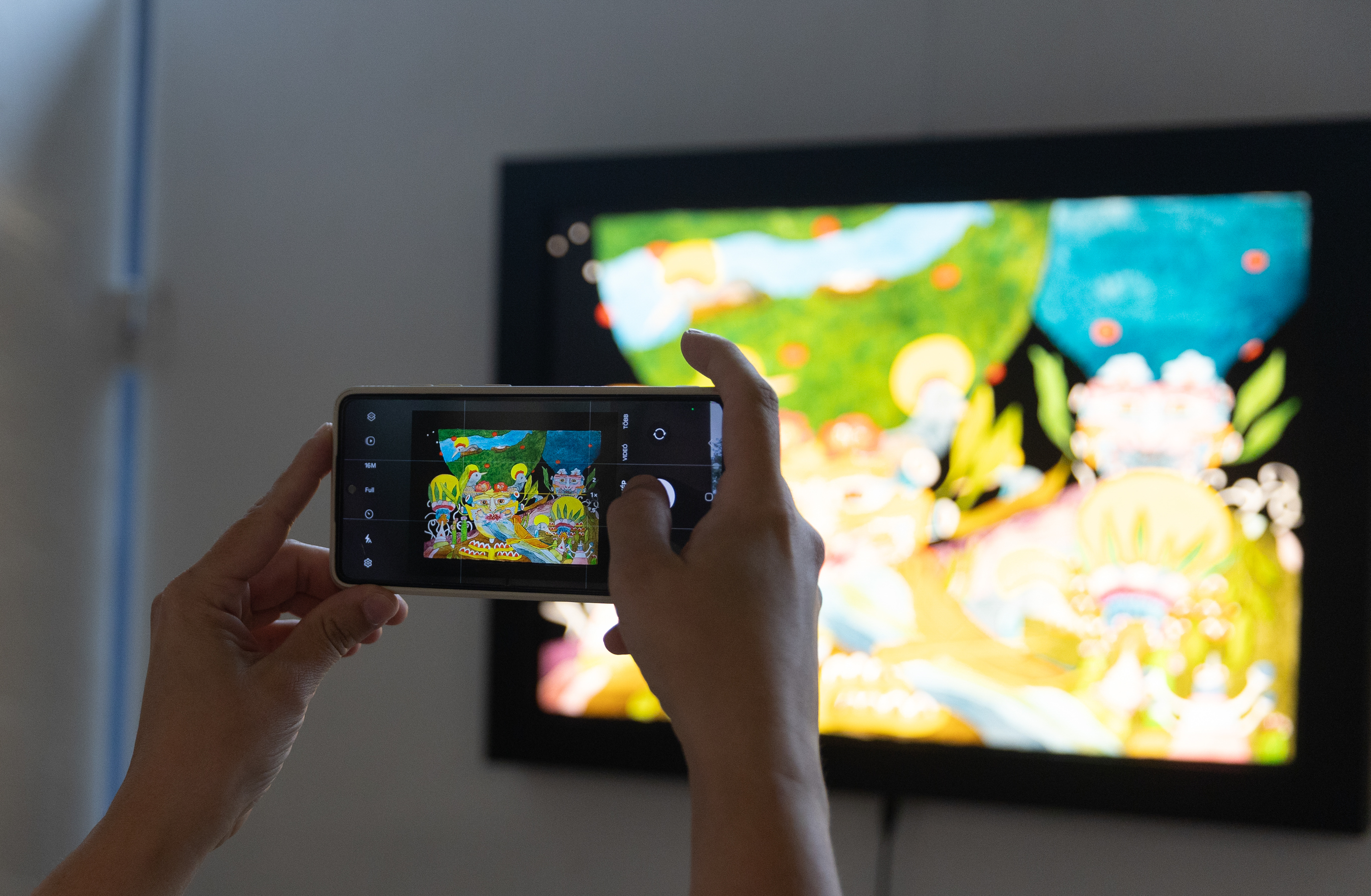
You were born in Litoměřice and later studied at the Faculty of Fine Arts in Brno.How did your artistic journey begin, and who were the most important influences or mentors along the way?
I come from the volcanic landscape of the České Středohoří, where I grew up close to the Terezín concentration camp and the underground Nazi factory Richard, into whose tunnels we used to sneak on secret expeditions as children. It was a time when red banners with incomprehensible styrofoam slogans of the communist regime seemed to hang everywhere you went. Together with my early reflections on life after death and my attempts to communicate with the spirits, all these elements shaped the mysterious world I was deeply immersed in as a little boy.
Shortly after the fall of the Iron Curtain, driven by a deep desire to discover the previously inaccessible world, I set off with a friend to the southwest of Europe, heading toward Africa, where we wanted to get through. During the jurney I drew comic-like scenes in our travel diary, documenting our adventure — which felt even greater because of our young age and the fact that we were actually running away from home. The passion for depicting adventurous and mysterious scenes has stayed with me to this day. You could say that while painting, I undertake journeys into distant lands, parallel realities, and into my own inner world.
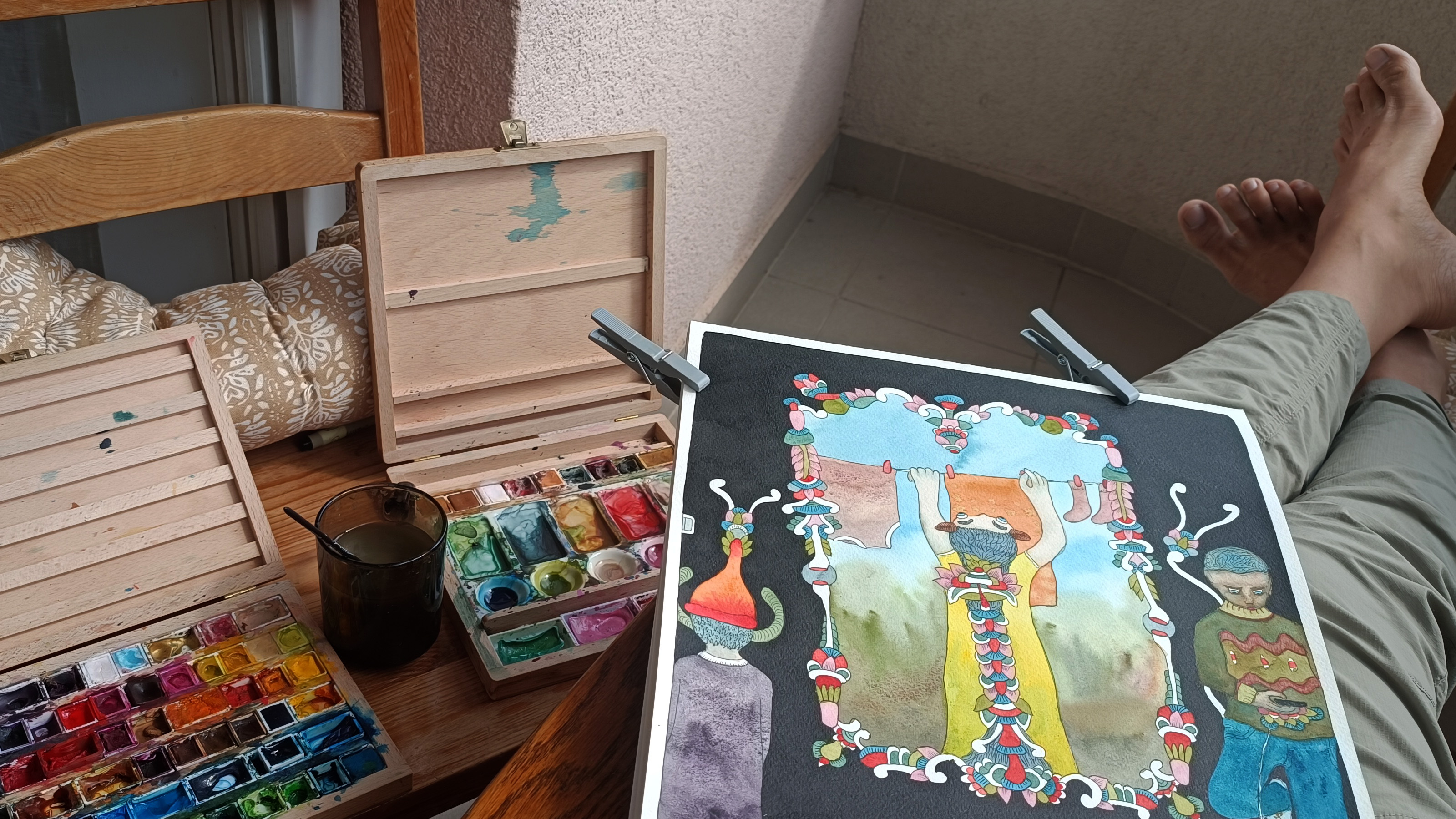
Your real name is Pavel Pražák, yet you work under the artistic name Mae Sara. How did this name come about, and what meaning does it hold for you?
My artistic name may sound as if there’s some special story behind it, but in fact, I chose it randomly, without thinking. The purpose was simply to enter a social network (Facebook), and I didn’t want to use my real name. Over time it became my artist’s pseudonym.
Spirituality, consciousness, and sacred geometry often appear in your works. How did you discover these themes, and what would you like to convey to the audience through them?
First of all, I don’t see spirituality as something exceptional. Being born into this earthly world and living an ordinary human life is, in itself, a spiritual act woven with consciousness. For me, perceiving the mystical dimension of the ordinary things is a natural way of seeing the world. I’m not trying to tell my audience anything fundamental, but I’m naturally glad when I can share the fascination of exploring all the possible dimensions of existence. I don’t deal much with sacred geometry as a theme, but as an illustrator and publisher, I collaborated on creating a deck of sacred geometry cards, which bring people closer to the possible meanings of well-known geometric objects and symbols.
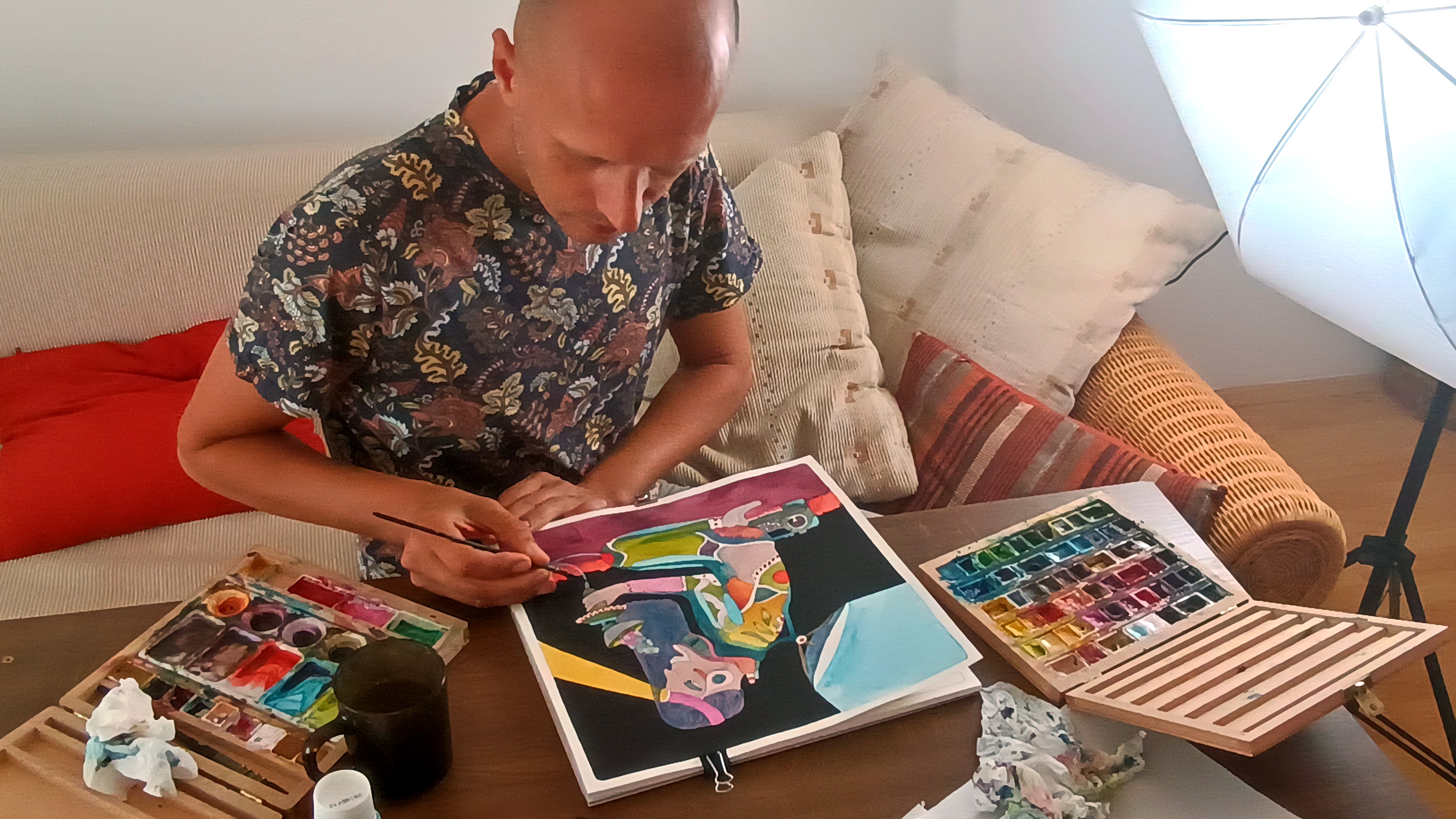
Your watercolors are very ethereal and dreamlike. How did you develop this distinctive visual style?
This was — and still is — a long journey. It took me many years to develop a certain feeling for working with colors, and I’m still learning. Throughout my life — and especially during my studies at the Faculty of Fine Arts — I tried out different artistic techniques. Watercolor appealed to me partly because it doesn’t require much space, and I could paint even in the corner of my small studio apartment. From every painting I take away some experience, and in this way, my authentic style gradually emerged.
You have illustrated several books, such as The Carpet at Great-Grandmother’s (Koberec u prababičky) and The Human Heart (Srdce člověka). In what way is illustrating a book different from creating a standalone painting?
The main difference is in the vision. When illustrating a story, I need to keep the subject of the illustration in mind. But the most exciting way of painting is creating with an empty mind, without vision. That’s my favorite way. There is only my hand and the blank sheet of paper. I am an observer. Some might call this technique “automatic drawing” or — more esoterically — “channeling.” Lines and shapes come from somewhere, and I just watch them silently. Most of my paintings are created this way. During the process, I start to see a certain direction, I follow it, and later I finish it in a way that feels right. I am both the creator and the observer at the same time, and I love discovering the hidden meanings and details in the painting.
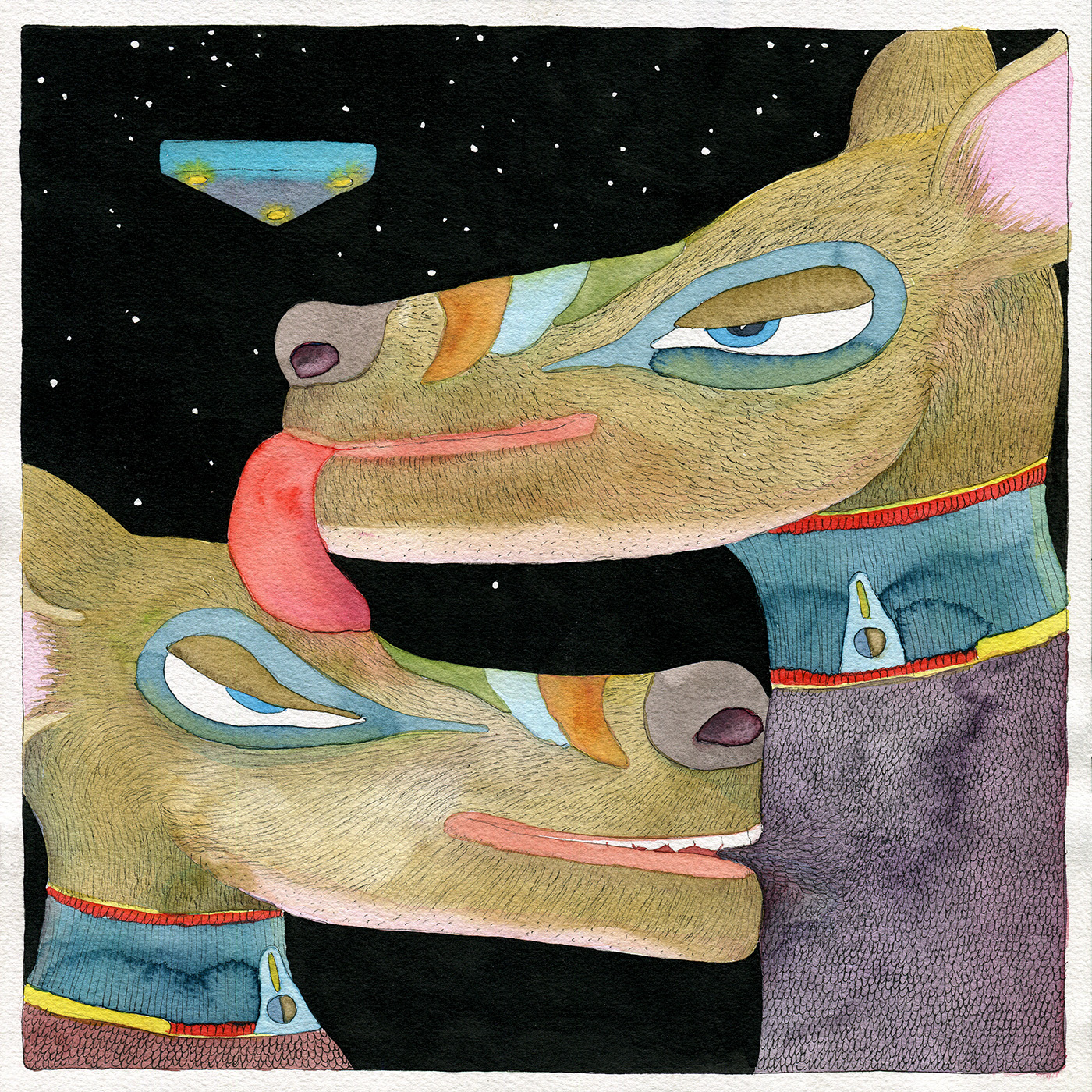
You are currently in Debrecen as part of an artist-in-residence program. What are you working on here during your stay?
I received this beautiful opportunity to spend my time painting without any assigned topic. I work with high-quality 100% cotton, square-shaped watercolor paper, and observe what appears in front of me. The main content could be described with words like: flower-plant consciousness, extraterrestrials, non-human beings, space.
How do you like Debrecen? What places have you discovered so far, and what has made the strongest impression on you?
I’ve walked here and there, exploring different areas. It may sound a little strange, but the strongest impression I had was in front of the central building of the huge cemetery in the northern part of Debrecen. I’ve already visited that place twice and will probably come back again. The roof color of the funeral hall of the Debrecen Public Cemetery, its structure, and the silence of the dignified space together create a powerful experience. As a foreigner here, I’m sensitive to things that are different from what I’m used to. We also have cars, streets, supermarkets in Czechia. We have public parks, attractions, universities, squares, public transport, even fountains (by the way, I love Debrecen’s fountain at Kossuth tér!). But until now I had never seen wooden totems instead of gravestones! I like them very much — some are clearly made by skilled craftsman-artists. I also had the chance to visit Hortobágyi Nemzeti Park, which was a lovely experience. The vast open areas make me feel comfortable — similar to the feeling of seeing a blank sheet of watercolor paper.
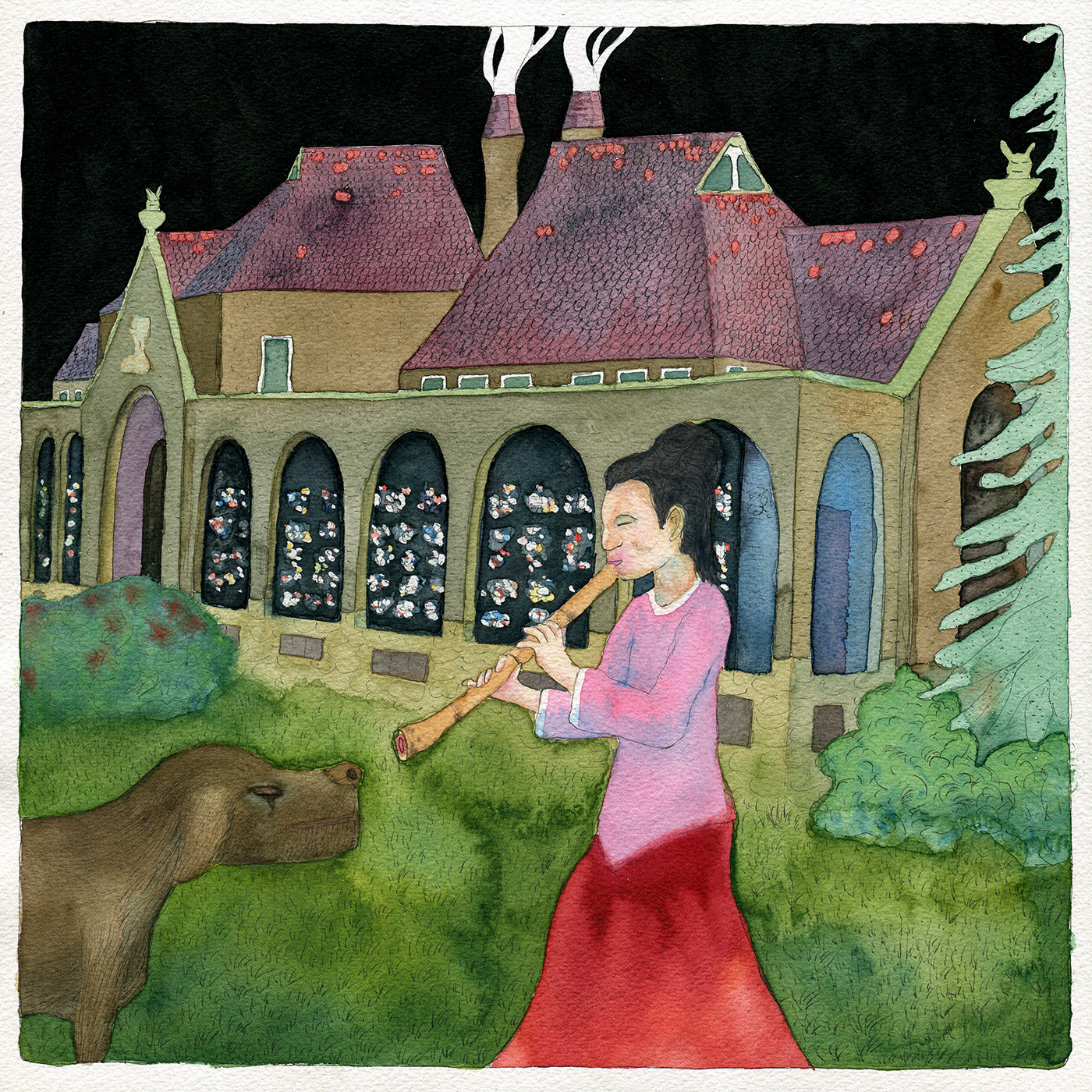
As an artist, how much do new environments and cities inspire you when you travel or take part in residencies?
Well, that’s a difficult question. I don’t see a direct inspiration from visiting places. I’m not the kind of artist who actively seeks inspiration. But I definitely love traveling and seeing how different people live, what they deal with in daily life, what kind of landscapes surround their cities. Every experience leaves traces, shaping my personality. Being in an unfamiliar place, staying in an empty apartment, is an exciting opportunity to cultivate something I already carry inside me.
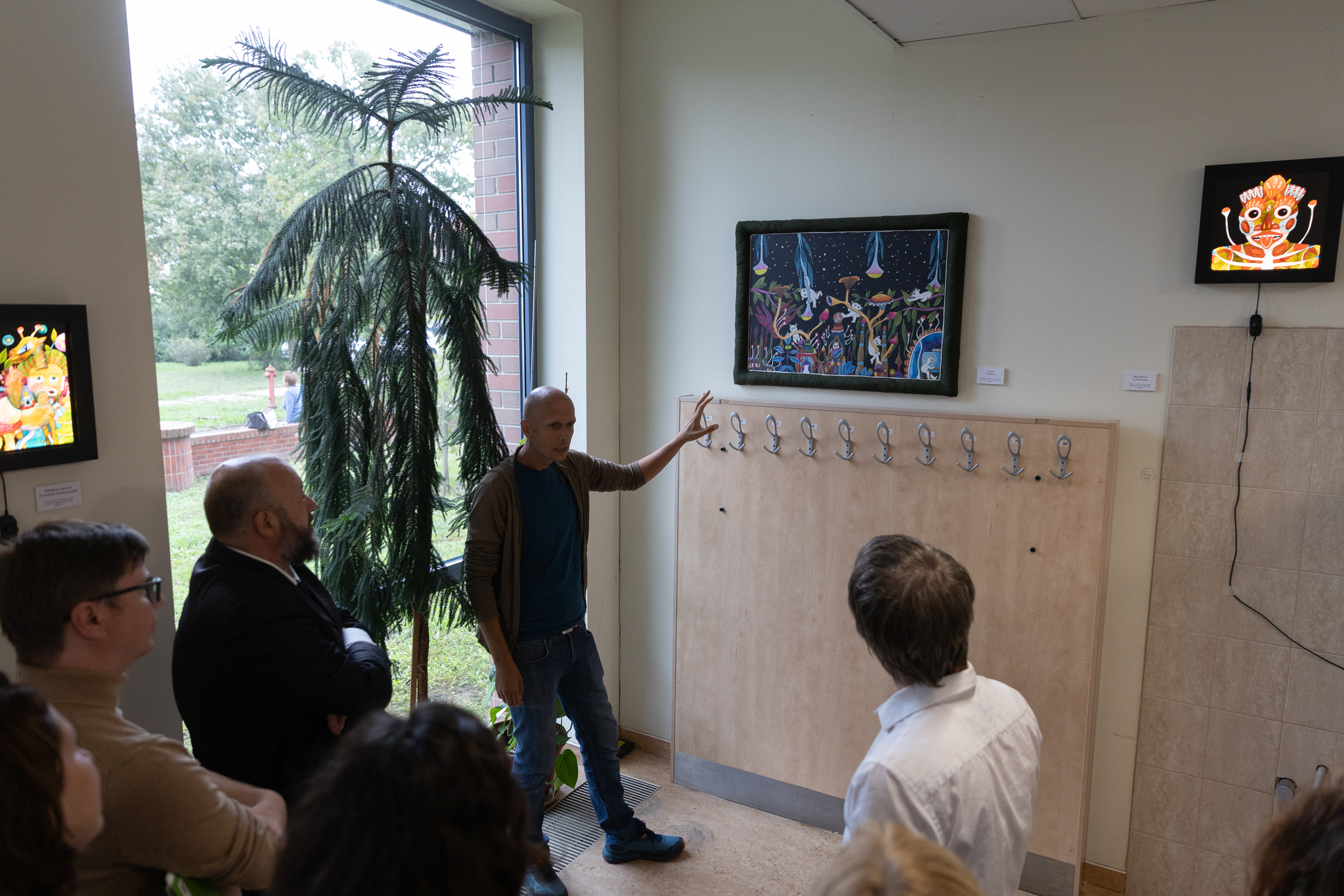
You are also active as a teacher, running workshops. What do you try to pass on to the younger generation of artists who attend your sessions?
I provide workshops only occasionally, because I don’t see myself as a teacher. From time to time I help students let go of expectations and enjoy the pure sensation of color and shape, encouraging them to work intuitively. It is not for everyone. Some people need clear instructions, to follow guidelines, to fulfill expectations. That’s not wrong — but my approach is uncertain, hidden in mist. Sometimes, when I draw with children, I don’t need to say many words. The kids can feel my passion and devotion to painting, and they usually tune into that flow very well. I don’t really have anything to “give” them — only my presence and the shared experience of painting.
What projects are you currently working on, and what plans do you have for the near future — be it new exhibitions, books, or illustrations?
A bit of everything. I’m preparing a few books and leporellos for printing, alongside that I’ll have a small exhibition in a little Czech town, and I’ve also been asked to create some illustrations. I’ll continue working on my long-term project of recording video interviews with various visual artists. Toward the end of the year, I’ll cooperate with a selected artist on preparing his/her exhibition in Gallery Ve Skle, which is the place I take care of in the lovely historical city of Znojmo. Alongside all these activities, my biggest challenge is finding support and financial resources to keep my projects alive. Living as a freelance artist, mostly working in the non-profit sphere, is a wonderful but demanding path.
Photos: from the personal archives of János Miskolczi and Pavel Pražák
© debrecenliterature.hu All Rights Reserved Privacy Policy